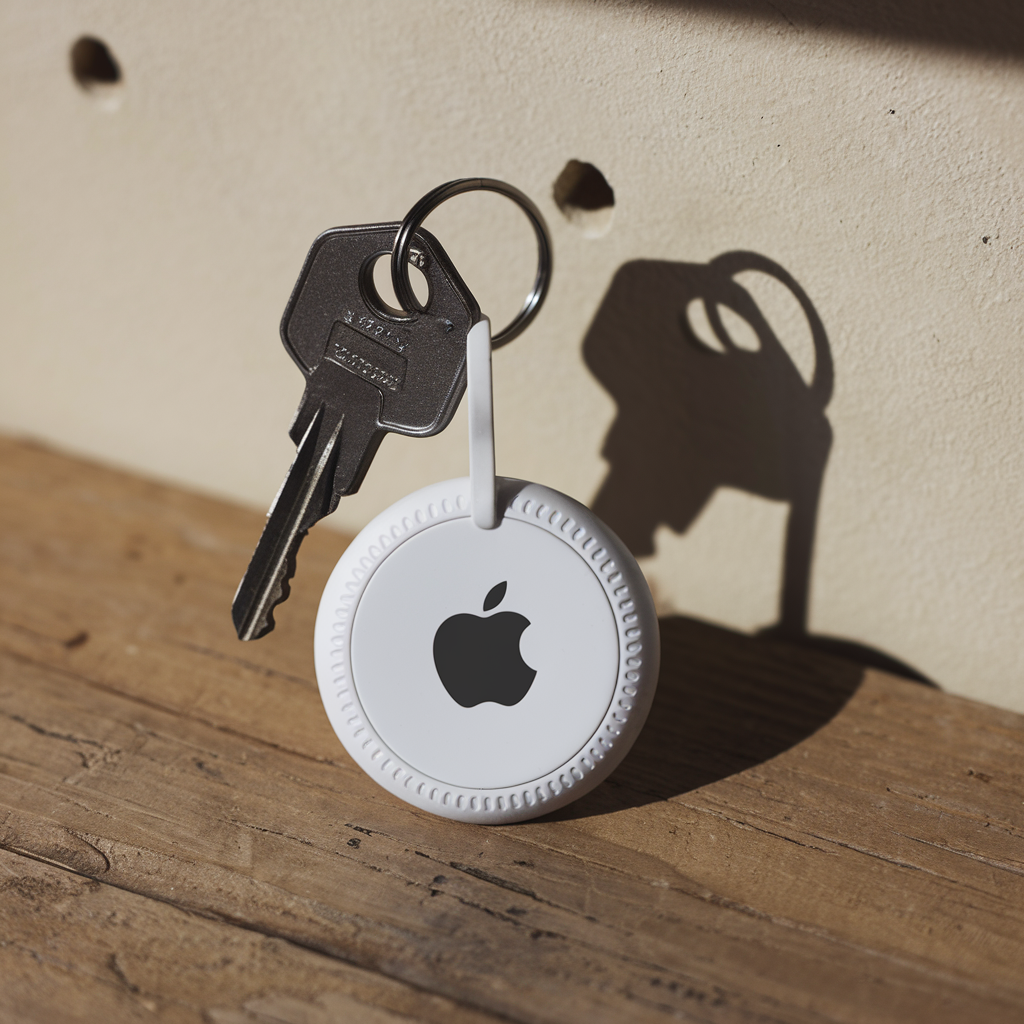Lifestyle
How Long Do AirTags Last? Battery Life!

AirTags have quickly become a must-have accessory for anyone looking to keep track of their belongings. Whether it’s your keys, wallet, or even that beloved pet, these tiny devices offer peace of mind with just a simple tap on your iPhone. But amidst all the excitement about tracking down lost items, one question looms large: how long do AirTags last? Understanding the battery life and longevity of these gadgets is crucial if you want to maximize their usefulness. Let’s dive into everything you need to know about how long Apple AirTag batteries last and what factors can affect their lifespan!
How long do AirTags last?
AirTags are designed to be long-lasting companions in your quest for tracking belongings. On average, you can expect an AirTag’s battery life to span about a year. This duration is based on typical usage patterns and includes various factors that may influence performance.
The CR2032 lithium coin cell battery powers each AirTag. When fully charged, this battery provides reliable tracking without frequent interruptions.
Keep in mind that actual usage will differ based on how often you ping the device or use features like Precision Finding. The more frequently you engage with these functions, the quicker the battery may drain.
Understanding what affects longevity can help users manage their expectations better. Knowing when and how to check your AirTag’s status ensures you’re always aware of its operational health.
Factors that affect battery life
Several factors can influence how long your AirTag battery lasts.
First, usage frequency plays a big role. If you frequently track your items, the battery will deplete more quickly. Every time you use Precision Finding or activate the speaker, it draws power.
Environmental conditions also matter. Extreme temperatures—either too hot or too cold—can negatively impact battery performance.
Another consideration is Bluetooth connectivity. Continuous searching for devices consumes energy. The farther away an item is from its paired device, the harder your AirTag works to maintain that connection.
Updates and software settings can affect battery life as well. Keeping your firmware updated ensures optimal performance but may introduce new features that could potentially drain more power over time.
Understanding these aspects helps manage expectations regarding how long Apple AirTags last in terms of their batteries.
How do you know it’s time to replace your AirTag battery?

Noticing a decline in your AirTag’s performance? It might be time for a battery change.
One clear indicator is the notification you receive on your paired device. Apple sends alerts when the battery level drops, prompting you to take action.
Another sign is if tracking becomes inconsistent. If your AirTag struggles to locate items or updates infrequently, it could mean the battery is running low.
You may also notice that sound notifications are weaker or absent altogether when you’re trying to find an item. This can hint at diminishing power levels.
Keep an eye on these signals for optimal functionality. Regular checks ensure that your AirTag remains reliable and effective in keeping track of your valuables.
How to check battery status manually
Checking the battery status of your AirTag is straightforward and can be done right from your iPhone. Start by opening the Find My app on your device.
Once you’re in, tap on the Items tab at the bottom. This will show you a list of all tracked items, including your AirTags. Choose the specific AirTag you want to check.
After selecting it, look for an indicator that shows its battery level. If it’s green or says “Good,” you’re in good shape! A yellow warning icon means it’s time to think about replacing that CR2032 coin cell battery soon.
Keep this simple process in mind whenever you’re unsure about how long your Apple AirTag batteries last. Regular checks help ensure you won’t lose track of important belongings due to low battery power.
How to replace the battery on your Apple AirTag
Replacing the battery on your Apple AirTag is a straightforward process. First, grab a new CR2032 coin cell battery. These are widely available and easy to find.
Get a New Battery: Use a CR2032 coin cell battery.
Remove the Back Cover:
Press down on the stainless steel back.
Rotate counterclockwise until you hear a click.
Take Out the Old Battery:
Carefully remove the old battery.
Note its orientation for correct placement.
Insert the New Battery:
Place the CR2032 battery with the positive side facing up.
Secure the Cover:
Align the back cover and rotate it clockwise until it clicks.
Final Check: Ensure everything is snug and secure before using your AirTag again.
How do AirTags compare to other trackers?
AirTags stand out in a crowded market of tracking devices. Unlike many competitors, they utilize Apple’s extensive Find My network, which dramatically increases the chances of locating lost items. This feature allows users to tap into millions of Apple devices for help in finding their belongings.
In terms of design, AirTags are sleek and minimalistic. They’re lightweight and easy to attach to various items. Other trackers may offer bulkier designs or require additional accessories for attachment.
Battery life is another crucial factor. AirTag batteries can last up to a year with regular use, while some rivals might need more frequent recharging or battery replacements.
Moreover, privacy features embedded within AirTags ensure that user data remains secure—a growing concern among tech-savvy consumers today. This focus on security helps differentiate them from other trackers that may not prioritize privacy as strongly.
When should I consider buying a replacement AirTag?
If you notice your AirTag isn’t tracking as accurately, it might be time for a replacement. Sometimes, even with a fresh battery, location updates can lag or fail.
Another sign is the physical condition of your device. Scratches or cracks can affect performance and reliability. If your AirTag has seen better days, consider investing in a new one.
Frequent disconnections from the Find My app are also telling signs. Persistent issues could indicate that something is wrong beyond just battery life.
If you’ve upgraded to newer technology like Apple’s latest devices and want seamless compatibility, purchasing a new AirTag might enhance your experience. It’s worth evaluating how well it fits into your current lifestyle and tech ecosystem before making a decision.
Can I extend the battery life of my AirTag?
Extending the battery life of your AirTag is a common concern for many users. Fortunately, there are several strategies you can employ to maximize its longevity.
First, minimize unnecessary use. The more frequently you ping or locate your AirTag, the faster the battery drains. Use these features only when necessary.
Additionally, consider adjusting the settings on your paired device. If you’re using an iPhone, turning off notifications related to finding items can help preserve energy.
Another tip is to keep it away from extreme temperatures. Both cold and heat can negatively impact battery performance over time.
Ensure that your AirTag isn’t in constant motion. Items like keys or bags that jostle around excessively may lead to quicker battery depletion due to frequent location updates.
Conclusion
Understanding how long AirTags last and their battery performance is essential for ensuring you get the most out of your tracking devices. Typically, Apple AirTag batteries can last about a year under normal usage conditions. However, various factors such as environmental conditions and frequency of use can influence this lifespan.
To know when it’s time to replace an AirTag battery, keep an eye on notifications from your iPhone or check the battery status manually through the Find My app. Replacing the battery is straightforward; just pop off the back cover and swap in a new CR2032 coin cell battery—making it user-friendly.
When comparing AirTags with other trackers, they stand out due to their integration with Apple’s ecosystem and U1 chip technology that enhances precise location tracking. If you’re frequently misplacing items or need reliable tracking for valuable possessions, investing in additional units might be worthwhile.
While there are ways to extend your device’s battery life by minimizing unnecessary interactions or optimizing settings, eventually all batteries will require replacement. Keeping track of these details ensures that you’ll always have functional devices at hand when needed.
Lifestyle
SosoActive: Energize Your Life, Elevate Your Performance

Are you ready to supercharge your life? In a world that constantly demands more from us, staying active is crucial. Whether it’s for physical health or mental clarity, being active can significantly enhance our daily lives. Enter SosoActive—a game-changing solution designed to help you energize your lifestyle and elevate your performance. If you’re looking for a way to boost both your productivity and well-being, keep reading. Discover how SosoActive can transform not just the way you move but also how you tackle each day!
The Importance of Being Active
Staying active is more than just a trend; it’s essential for overall well-being. Regular movement fuels the body and mind, promoting better health outcomes.
Physical activity reduces the risk of chronic diseases like heart disease and diabetes. It keeps your muscles strong and joints flexible, allowing you to enjoy life without restrictions.
Mental health also reaps rewards from an active lifestyle. Exercise releases endorphins, the body’s natural mood lifters. This can reduce stress levels and combat anxiety.
Moreover, being active enhances cognitive functions such as memory and focus. Whether you’re hitting the gym or enjoying a brisk walk in nature, each step contributes to sharper thinking.
Engaging in physical activities fosters social connections too. Group workouts or team sports build friendships while motivating you to stay on track with your fitness goals.
What is SosoActive?
SosoActive is not just another fitness trend; it’s a lifestyle revolution. Designed for those who want to infuse energy into their daily lives, SosoActive combines innovative technology with practical exercises.
At its core, SosoActive focuses on making activity enjoyable and accessible. It transitions seamlessly from a workout tool to an everyday companion that encourages movement at every opportunity.
With features tailored for all fitness levels, it promotes engagement without the intimidation often associated with traditional exercise programs. Whether you’re a busy professional or a stay-at-home parent, SosoActive adapts to your unique routine.
The community surrounding SosoActive enhances the experience even further. Users share tips, success stories and motivation—all designed to make staying active feel less like a chore and more like an adventure. Discovering what makes your body thrive has never been easier or more exciting than with SosoActive by your side.
Features and Benefits of SosoActive
SosoActive stands out with its dynamic design and user-friendly interface. It’s crafted to fit seamlessly into your lifestyle, making physical activity accessible for everyone.
One of its key features is the customizable workout plans tailored to individual fitness levels. Whether you’re a beginner or an athlete, SosoActive meets you where you are.
The app also offers real-time tracking of your performance metrics. This helps users monitor their progress effectively, providing motivation along the way.
Another highlight is the community aspect. Users can connect with others for support and encouragement, fostering a sense of belonging in their health journey.
Additionally, SosoActive incorporates gamification elements that make workouts fun and engaging. You earn rewards as you complete challenges, turning exercise into an enjoyable part of your day rather than a chore.
How to Incorporate SosoActive into Your Daily Routine
Integrating SosoActive into your daily life is simple and rewarding. Start by setting aside a specific time each day for your SosoActive sessions. This could be in the morning to kickstart your energy or during lunch as a refreshing break.
Consider pairing SosoActive with existing routines, like using it while watching TV or listening to music. It blends seamlessly into any environment, making movement enjoyable rather than chore-like.
Try short bursts of activity throughout the day. A few minutes of stretching or light exercises can elevate your mood and productivity levels significantly.
Invite friends or family members to join you with SosoActive. Shared experiences not only boost motivation but also make staying active more fun and engaging.
Don’t forget to track your progress! Keeping a journal can help you understand how incorporating SosoActive changes your energy levels and overall performance over time.
Success Stories from SosoActive Users
Many individuals have transformed their lives with SosoActive. Take Sarah, for instance. She struggled to maintain her energy throughout the day while balancing work and family commitments. After integrating SosoActive into her routine, she noticed a remarkable boost in stamina and focus.
Then there’s Mike, an avid runner who aimed to improve his performance. He discovered that using SosoActive not only enhanced his endurance but also expedited recovery times after intense training sessions.
Jessica shared how SosoActive helped her break free from gym intimidation. With the app’s guided workouts, she built confidence and found joy in staying active rather than viewing it as a chore.
These stories reveal just a glimpse of what SosoActive can achieve for people from all walks of life. Real users continue to share their journeys, inspiring others to take charge of their health through movement and motivation.
Alternative Ways to Stay Active
Staying active doesn’t always mean hitting the gym. There are countless alternative ways to keep your body moving and energized.
Consider walking or biking instead of driving. Not only does this get your heart rate up, but it also allows you to enjoy fresh air and nature.
Organizing a weekend hike with friends can be both social and beneficial for fitness. The changing terrain challenges your muscles while offering a mental break from screens.
Try dancing in your living room – no need for lessons! Just turn on some music and let loose. It’s fun, liberating, and a great workout without feeling like one.
Housework can also double as exercise; vacuuming, gardening, or even cleaning windows gets you moving while making your space shine.
Explore local classes that interest you, such as yoga or martial arts. Engaging in new activities keeps things exciting and diverse.
Conclusion: Why You Should Give SosoActive a Try
SosoActive offers a unique approach to energizing your life and enhancing your performance. With its carefully designed features, it promotes an active lifestyle that can be seamlessly integrated into daily routines. Users have shared inspiring success stories, highlighting how SosoActive has transformed their energy levels and overall well-being.
Incorporating SosoActive into your life could be the catalyst you need for positive change. Whether you’re looking to boost productivity at work or simply enjoy more quality time with loved ones, this innovative solution is worth exploring. The benefits of staying active are undeniable, and SosoActive provides the support necessary to make that journey enjoyable.
If you’re ready to elevate your performance and embrace a more vibrant lifestyle, giving SosoActive a try might just be the best decision you make this year. Energize yourself today—your future self will thank you!
Lifestyle
How to Make Your Home More Accessible for Disabled Individuals

Creating a safe and accessible home is one of the most impactful ways to support people with disabilities, seniors, or anyone facing mobility challenges. A thoughtfully designed living environment doesn’t just remove physical barriers; it restores independence, improves safety, and allows individuals to enjoy their home with dignity.
Whether you are preparing your home for a loved one or considering modifications for yourself, here are key ways to make a home more accessible.
1. Start With Entrances and Exits
One of the biggest challenges for wheelchair users or individuals with limited mobility is entering and exiting the home. Steps at the front or back door can quickly become obstacles. Installing ramps is the most effective solution.
Permanent ramps are ideal for homeowners looking for a long-term modification, while wheelchair ramp rental is a great option for temporary needs, such as recovery after surgery or hosting a disabled guest. When adding a ramp, make sure it is wide enough for the user’s mobility device and built with a gentle slope to meet ADA guidelines. Handrails and slip-resistant surfaces add another layer of safety.
2. Widen Doorways and Hallways
Standard doorways are often too narrow for wheelchairs and walkers. Expanding doorways to at least 32 inches ensures smooth navigation throughout the home. Similarly, hallways should be free from clutter and wide enough to allow turning and maneuvering. Pocket doors or offset hinges can also provide extra clearance without major renovations.
3. Install Accessible Bathrooms
Bathrooms are one of the most common places where falls and accidents occur. Making this space accessible is crucial.
- Add roll-in or walk-in showers with benches and handheld showerheads.
- Place toilets at a comfortable height for easy transfer.
- Use slip-resistant flooring to prevent accidents.
Installing handicap grab bars near the toilet and inside the shower provides stability and reassurance. Properly placed grab bars can make a life-changing difference in helping someone maintain balance and independence.
4. Focus on the Kitchen
An accessible kitchen allows individuals to continue preparing meals safely and comfortably. Consider modifications such as:
- Lowered countertops and sinks for seated use.
- Pull-out shelves and drawers for easy reach.
- Lever-style handles instead of knobs.
- Appliances with front-mounted controls and easy-to-read displays.
Small changes, like rearranging frequently used items to lower shelves, can also help improve accessibility without major remodeling.
5. Improve Lighting and Visibility
For individuals with vision impairments, lighting plays a key role in accessibility. Install bright, evenly distributed lighting in hallways, staircases, and bathrooms. Motion-sensor lights add convenience, while contrasting colors on walls, floors, and furniture can help with depth perception and navigation.
6. Make Stairs Safer
If the home has multiple levels, stairs can be a significant challenge. Installing a stair lift is often the safest and most effective solution. For those who prefer not to add a lift, consider sturdy handrails on both sides, non-slip treads, and clear, consistent lighting.
7. Create Bedroom Accessibility
Bedrooms should provide a safe, restful environment. Adjustable beds can make transfers easier, while furniture should be arranged to allow for wide, clear pathways. Closets can be made more accessible with pull-down rods and lower shelving.
8. Smart Home Technology for Independence
Technology can make accessibility even more seamless. Smart home devices allow individuals to control lights, thermostats, locks, and appliances through voice commands or smartphone apps. For someone with limited mobility, these tools provide convenience and enhance independence.
9. Outdoor Accessibility
Accessibility shouldn’t stop at the front door. Smooth pathways, sturdy railings, and outdoor ramps ensure that individuals can enjoy gardens, yards, or patios safely. Weather-resistant surfaces also reduce risks of slips and falls.
Final Thoughts
Home accessibility is not just about meeting physical needs, it’s about creating an environment where individuals feel empowered, safe, and independent. Whether it’s a permanent remodel or a temporary solution like renting wheelchair ramps, these modifications can dramatically improve quality of life. Adding features such as handicap grab bars or smart home technology ensures both safety and comfort.
By making thoughtful changes, you not only enhance mobility but also build a space where everyone, regardless of age or ability, can feel at home.
Lifestyle
Why Rare Carat Is a Must-Visit Before You Buy

If you’re considering purchasing a diamond, you are making one of the most memorable purchases of your life. Be it the engagement, anniversary, or investment, you need trust, guidance, and clarity. That is the mission of Rare Carat. They are transforming the online diamond shopping experience with their smart search features and certified gemologist support. Rare Carat is the new benchmark as they are doing it well unlike others.
Here is why Rare Carat is the ultimate and first stop for your diamond decisions:
- Understandable, Transparent Pricing
Pricing at Rare Carat is open, clear, and customer-centric. Rare Carat unlike most retailers doesn’t hide costs or inflate prices. Rare Carat settles more than a million real-time natural and lab-grown diamonds, assuring you fair value based on independent data.
- Diamond Score Powered By AI
Not Certain on how a diamond cut or clarity should be evaluated? Rare Carat has AI that scores diamonds from 1 – 10. Their rating simplifies the purchasing process as it does the quality assessment for you.
- Instant Side-By-Side Comparisons of Diamonds
With Rare Carat, you’re able to compare diamonds across several suppliers in a single place. Instead of managing a dozen tabs and websites, you can compare several stones with regard to cut, color, clarity, and certification.
- Only Diamonds Certified by GIA and IGI Labs Are Listed
Each diamond published on Rare Carat has a certification from the Gemological Institute of America (GIA) or the International Gemological Institute (IGI). This kind of trust and certification on every diamond is a rarity among platforms.
- Complimentary Real Time Consultations with Gemologists
Shopping with Rare Carat provides you with the opportunity to chat with gemologists who clarify the specifications and offer impartial opinions. Many retail stores tend to make you feel obligated to make a purchase, but Rare Carat is different. They offer clear answers without any pressure to buy.
- Focused and Advanced Filters to Target Only What You Want
Rare Carat allows you to set your preferences for the carat, shape, clarity, color and even your budget. You won’t have to search for the right options because Rare Carat gets them for you right on the spot.
- Verified Customer Reviews And Photos Of The Ring In The Real World
Rare Carat provides authentic shopper reviews as well as real-life diamond video testimonials. This level of openness helps shoppers as it gives them more than the usual marketing fluff.
- Custom Ring Settings Tailored To Your Preferred Diamond Shape
Be it minimalistic or vintage designs, Rare Carat assists in choosing the best ring setting that goes with your diamond. It comes with a variety of metals as well as styles and designs, thus serving as a one-stop shop for your ring.
- No Unauthorized Sellers Permitted
Each Rare Carat supplier is rigorously screened which aligns with the company’s ethos as a trusted diamond seller. For that reason, you will not enter a shop filled with faceless and subpar listings like those that are common on Etsy. Instead, you will buy from fully certified and guaranteed professional jewelers.
- No Hidden Fees When You Need To Spread Costs Over Time
Rare Carat allows you to get your diamond and pay for it in a more convenient way with safe financing options that split the total cost into more manageable amounts. This helps one stay financially on track while enjoying the ring’s quality and style.
- Stress-Free Shipping And A Warranty Like No Other
Rare Carat’s policies on stress and warranty the customer by simply stating that “Rare Carat has an unconditional 30 day return policy and a lifetime warranty on the products”. If a customer tries a setting and does not feel comfortable with it, they can return it. In addition, in the rare case something negative does happen to the item’s setting the customer is still covered for a lifetime.
- 24/7 Human Support That Actually Helps
Have a question regarding some matters in the middle of the day? Well, 24/7 Support is not an issue. Rare Carat is active and ready to assist customer support. This is not limited to a specific radius as the customer care tends to be beyond what is offered by classic retailers.
- Become an Expert A Step At a Time
Are you grappling with the phrase “VS1 clarity”? Well, with Rare Carat you do not have to worry about it. Rare Carat has in-depth, as well as entertaining, guides that can assist you become an expert in the matter.
- Full disclosure on the lab grown diamonds, information matters
Are you looking for something more affordable and eco-friendly? Well, Rare Carat features a wide array of lab diamonds for you to choose from. They are not only affordable and certified, but are also properly marked. They are separated from actual stone diamonds and do vendue for cheaper, so you clearly know what you are purchasing.
- A Five-Star Reputation You Can Count On
Verified five-star reviews on Google and Trustpilot put Rare Carat’s reputation at over 30,000 and counting. The customers, from engagement ring seekers and shoppers to anniversary gift finders, have been and continue to be really happy.
- Competitive Advantage Over Big Retailers
Unlike Rare Carat, Amazon Jewelry lacks fully vetted and graded diamonds, expert evaluation, diamond comparisons, and descriptive overviews. With Rare Carat, you do not only purchase a stone. You purchase assurance and trust.
- Experience More Efficient Than In-Store Retail Chains
With Rare Carat’s certified diamonds, AI grading, and unpressured shopping, you do get a walk-in service, but you also get the gift of transparent and modern shopping. Unlike the outdated Kay Jewelers, Rare Carat builds the process to provide what shoppers crave.
- More Trustworthy Than Crowdsourced Platforms
Rare Carat, unlike Etsy, does not let sellers do what they want. Rare Carat’s professional oversight for seller documentation, certification, and comprehensive quality control guarantees trust with every purchase, unlike the unique but inconsistent styles of Etsy.
Conclusion: Why Rare Carat Is The Smart, Safe, and Strong Choice
Every purchase we make needs in-depth research and analysis, especially in a case of a purchase as sensitive as a diamond. For enabling powerful searches, real gemologists, verified reviews and certified sellers, Rare Carat shows customer-centric service. Unlike Amazon Jewelry, Kay Jewelers or Etsy, Rare Carat offers a distinctly easier and smarter way to purchase diamonds.
Now, would you like to confidently begin purchasing?

 Blog10 months ago
Blog10 months agoHow to Deal with Scabies While Traveling

 Travel10 months ago
Travel10 months agoRichmond, Virginia Street Art Guide

 Travel10 months ago
Travel10 months agoPerhentian Islands: How to Get There, What to Expect, & More

 Travel10 months ago
Travel10 months agoHow to Live in Your Car in New Zealand

 Travel10 months ago
Travel10 months agoSouvenir in Nepal: A Guide to Unique Handicrafts and Cultural Treasures

 Travel10 months ago
Travel10 months agoVegan Guide to Dining Out in Richmond, Virginia

 Food10 months ago
Food10 months agoVegetarian Food Nepal: A Journey into Flavorful Plant-Based Cuisine

 Travel7 months ago
Travel7 months agoA Local’s Guide to Sanibel Island, Florida















